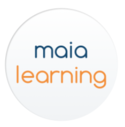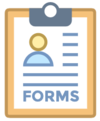Difference between revisions of "Technology Guide, Parent"
Brvanderhaak (talk | contribs) |
Brvanderhaak (talk | contribs) |
||
| Line 1: | Line 1: | ||
| − | + | <sophie article="Technology Guide, Parent"/> | |
| + | |||
[[Category:Elementary Handbook]] | [[Category:Elementary Handbook]] | ||
[[Category:Middle School Handbook]] | [[Category:Middle School Handbook]] | ||
[[Category:High School Handbook]] | [[Category:High School Handbook]] | ||
Latest revision as of 10:25, 22 February 2016
Contents
Knights Portal[edit]
The Knights Portal is a password-protected area of the CAJ website that has information pertaining to you as a CAJ parent. From the CAJ public website, click on Knights Login in the heading and enter the log in information that was in the "Information for Parents/Guardians on the CAJ Website” PDF that was sent to you when your child enrolled in CAJ. If you would like to use your personal Google account to log in to Knights Portal rather than the account that has been created for you, please email techrequest@caj.ac.jp and inform us which personal Google account you would like to use.
Within the portal you will have access to important information relating to your child's academics and campus life. See below for an explanation of the icon links found on the page:
LearnerBuild[edit]
LearnerBuild is the online gradebook used in all divisions. Parents log in to the site with the same Google account they use for the Knights Portal. For detailed instructions on how to log in and receive email notifications, click here.
Vidigami[edit]
Vidigami is our secure photo sharing site, allowing CAJ staff to share photos of student activities and events with parents. If you do not have a Vidigami account already set up, you will receive an invitation email to create your parent account at the beginning of the school year. If you need the Vidigami invitation resent to you, please let us know at techrequest@caj.ac.jp.
Maia Learning[edit]
Maia Learning keeps track of student standardized test scores, college choices, college applications information, and a personality and career assessment. It is used by students to research colleges and options after graduation. If you are a parent of a high school student, you will receive your parent login information from the CAJ HS Guidance Counselor.
Directory[edit]
Parents can opt-in to having their contact information (phone number, email, mailing address) shared within the school directory. Please understand that those who do not opt-in will not be able to access other parents' contact info in the directory.
School Forms[edit]
Every year, you will be directed to fill out important school forms such as your emergency contact information and the parent agreement form on this page. Some field trip consent forms (e.g: SWOW) are also posted here.
Other Portal Links[edit]
How to Check Cafeteria Charges
RightNow Media Signup - create your free RightNow Media account and access hundreds of video devotionals Bible studies
Student Google Accounts[edit]
CAJ creates Google accounts for students starting from elementary and e-mail is enabled from 5th grade. For their child's safety, parents are encouraged to know their child's Google password and, as appropriate, routinely check on their child's communications. A student's CAJ Google password can be reset by the CAJ tech team and per the parent's request.
Although parents are encouraged to keep tabs on their child's emails, chats, and account activity, please do not send email from your child's account or use any of the connected Google apps yourself. If you would like to get in contact with other CAJ families, please opt-in to sharing your information in the school directory.
Programs Used by Students[edit]
CAJ students use a variety of web-based programs for school work. Here is an explanation of some of the the main programs that you may hear about or see your child using:
Elementary Programs[edit]
Seesaw[edit]
Elementary students access and submit assignments online through this learning platform. Parents can see and comment on their own child's work. Family login information is sent at the beginning of the school year. If you have been unable to log in to Seesaw, please contact your child's teacher.
Matific[edit]
This math teaching resource gives elementary students practice in grade-appropriate math problems.
IXL[edit]
Students in 4th and 5th grade use IXL for both language arts and math practice. Some students in lower grades also use the site for extra math/grammar help.
Typing Club[edit]
An excellent typing program that students begin using from 3rd grade.
Google Classroom[edit]
In 5th grade, teachers start using Google Classroom to an extent to assign and collect work. Parents are unable to access Google Classroom directly but can opt-in to receive Guardian Summaries every day/week. These emailed summaries show their child's upcoming assignments and late work. If you would like to receive these Guardian Summaries and have not gotten set up yet, please email one of your child's teachers and ask for access.
Middle School Programs[edit]
IXL[edit]
Math and English teachers use IXL extensively in middle school to give students practice in math/grammar concepts.
Typing Club[edit]
6th graders maintain access to their Typing Club accounts and are encouraged to continue using the platform for typing practice. 7th and 8th graders who want to use Typing Club are granted access if they request it.
Google Classroom[edit]
Middle school teachers use Google Classroom to assign and collect work from students. Parents are unable to access Google Classroom directly but can opt-in to receive Guardian Summaries every day/week. These emailed summaries show their child's upcoming assignments and late work. If you would like to receive these Guardian Summaries and have not gotten set up yet, please email one of your child's teachers and ask for access.
High School Programs[edit]
Google Classroom[edit]
High school teachers use Google Classroom to assign and collect work from students. Parents are unable to access Google Classroom directly but can opt-in to receive Guardian Summaries every day/week. These emailed summaries show their child's upcoming assignments and late work. If you would like to receive these Guardian Summaries and have not gotten set up yet, please email one of your child's teachers and ask for access.
Methodize[edit]
Methodize provides custom built courses consisting of lessons, quizzes and tests, providing high school students practice for the SAT.
Parent Guide for Computers, Phones, and Electronic Devices[edit]
The following list is a compilation from various sources and serve as recommendations.
- Have conversations about internet safety as soon as possible. Children can benefit from monitoring and accountability programs, but some teens know how to get around them. Smart phone use and safety should also be carefully considered.
- Ask questions: Who are they communicating with? What websites did they visit? What will you need to use the computer for tonight? (It’s a good idea to review what the child is doing for homework each night anyway, and how much time he/she estimates each assignment or project will take or he/she intends to spend on it. Computer use can be part of the same conversation).
- Establish rules about when, where, how much, and why the computer may be use. A template for creating a contract can be effective for many students, but STICK TO IT! This may need to be revised as a child gets older, and it should be developed together, jointly deciding on rewards and consequences, and kept in an obvious place (near the computer.)
- Keep the computer in a central, monitored place – comment on the positive use of computer as well as “nagging.” Many experts recommend children not be allowed to have a computer in their bedroom or other private areas. Don't forget smart phones and other digital devices are also direct connections to the online world. Experts also advise restricting use when responsible adults are not home.
- A computer is not a “right,” but a privilege. Family rules are appropriate: time limits, purpose, how to behave ethically and responsibly, how to decide who gets to use it when there is conflict.
- Make sure their social media account is set on “private” not “public”
- Make sure they know to never post personal information (phone number, address, Social Security number, etc.) on their profile
- Never share passwords with friends
- Remind students that the computer “remembers” what has been posted and it is trackable. They should use the same language they would use face to face. Deleting an entry seldom means it is gone from the entire Internet.
- Remind students that they can’t assume people online are who they say they are.
- Try to stay educated. You don’t have to be an expert, but you shouldn’t be naïve or get frustrated and give up.
- Be a role model! How are we using our time?
It is appropriate as a parent to monitor and guide a child’s behavior. Spot-checking is healthy and does not have to be an indicator of a lack of trust or seen as a punishment, but rather shows appropriate parental concern for your child's well being.
CAJ Resources[edit]
Please contact us if you would like assistance with a specific problem or finding a resource to assist you with teaching and monitoring your child's appropriate use of technology. Monitoring and accountability solutions are constantly evolving and we are committed to investigating and offering advice about options. Nate Rudd, team leader
See also:
Additional Resources[edit]
Good places to start for information include:
- Technology Guide, Student
- Common Sense Media - Common Sense has a wide range of best practice materials and well researched information available for parents.
- iRules CAJ's library has multiple copies of the iRules text, and they have a template for creating a contract between parents and children to encourage responsible technology use.















